-
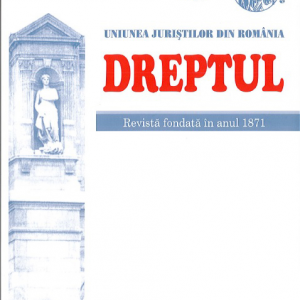 In this study we have analyzed the effects of the situation of incompatibility in which the local elected representatives, especially the mayors, can be found, as this situation has been established by the prefect or by the National Integrity Agency through the evaluation report. Thus, in the first case, finding the incompatibility entails the lawful cessation of the mayor’s mandate, if he will not renounce the incompatible function within the time limit provided by the law, and, in the latter case, the state of incompatibility has as consequence the prohibition of the person declared incompatible to fill an eligible position for a period of 3 years from the date of cessation of the current mandate or, respectively, from the date of the final assessment report of the National Integrity Agency. In other words, not even if the National Integrity Agency establishes it, the state of incompatibility is not an implacable reason for lawful cessation of the mayor’s mandate, but, on the contrary, it can avoid such a consequence by renouncing the incompatible function within the same period provided by the law in case the incompatibility is established by the prefect.
In this study we have analyzed the effects of the situation of incompatibility in which the local elected representatives, especially the mayors, can be found, as this situation has been established by the prefect or by the National Integrity Agency through the evaluation report. Thus, in the first case, finding the incompatibility entails the lawful cessation of the mayor’s mandate, if he will not renounce the incompatible function within the time limit provided by the law, and, in the latter case, the state of incompatibility has as consequence the prohibition of the person declared incompatible to fill an eligible position for a period of 3 years from the date of cessation of the current mandate or, respectively, from the date of the final assessment report of the National Integrity Agency. In other words, not even if the National Integrity Agency establishes it, the state of incompatibility is not an implacable reason for lawful cessation of the mayor’s mandate, but, on the contrary, it can avoid such a consequence by renouncing the incompatible function within the same period provided by the law in case the incompatibility is established by the prefect. -
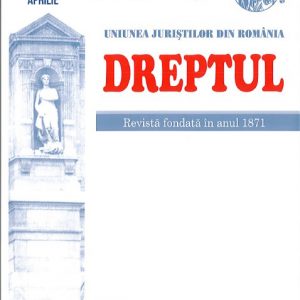 In this article the author aims to analyze, from a constitutional point of view, the content of Article 21 of the Basic Law. The constitutionalization of free access to justice and the provisions of Article 21 located in the First Chapter of the Second Title of the Basic Law, along with other rules and principles that protect the man-citizen as the primer pin of the governance system and the holder of sovereign political power, as well as exclusive beneficiary, proves thereof the concern of the Constituent Assembly of 1991 in creating the necessary guarantees in regard with the defence of the human rights and liberties in accordance with the general principles of the constitutional democracy and the rule of law as established in the documents of universal human rights, ratified by Romania.
In this article the author aims to analyze, from a constitutional point of view, the content of Article 21 of the Basic Law. The constitutionalization of free access to justice and the provisions of Article 21 located in the First Chapter of the Second Title of the Basic Law, along with other rules and principles that protect the man-citizen as the primer pin of the governance system and the holder of sovereign political power, as well as exclusive beneficiary, proves thereof the concern of the Constituent Assembly of 1991 in creating the necessary guarantees in regard with the defence of the human rights and liberties in accordance with the general principles of the constitutional democracy and the rule of law as established in the documents of universal human rights, ratified by Romania. -
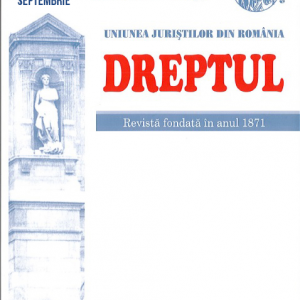 By this study we aimed to proceed to a configuration of the notion of „criminal case”, used by the legislator in Article 29 (1) i) of the Government Emergency Ordinance No 80/2013 on the judicial stamp duties, taking into account in our approach in a correlated way, on the one hand, the case law of the Constitutional Court, of the High Court of Cassation and Justice and of the other courts of law, on the other hand, the doctrinal considerations on the mentioned article, and of the institutions with which the notion necessarily interacts. The approached topic has an inter-institutional nature, because it is necessary, for its correct approach, to resort to legal institutions dealt with by the criminal procedural law (the criminal action, the solutions pronounced in a criminal file, the subjects of the criminal proceedings, etc.), but, of course, the civil procedural law (the civil action, the establishment of judicial stamp duties, the cause of the application for summons, etc.). We consider that the present article presents first of all a practical interest, because, in the activity of the courts of law, the interpretation of Article 29 (1) i) of the Government Emergency Ordinance No 80/2013 is divergent and non-unitary, due to an acute lack of terminological unity, and this deficiency can be reflected in an impairment of the quality of the act of justice and, further, in a decrease of the citizen’s trust in justice. The article is structured in two essential parts, the first with a general character that includes the sections „Introductory Considerations”, „Arising the questioning” and „Interpretation Tools”, and the second with a special, applied character, that includes the sections „The situation in which the civil action is exercised separately before the civil court after the criminal file has been solved in the criminal investigation phase by a solution of dismissal or abandonment of the criminal prosecution”, „The situation in which the civil action is exercised separately before the civil court without having ordered a solution within the criminal file” and Conclusions”. It should be emphasized that, in order to formulate the answer to the approached subject, our thought was oriented, first of all, to those for whom the act of justice is done – the citizens –, proposing solutions that in our vision correspond to some requirements of fairness and equality before the law. Likewise the topic subject to discussion was not approached in an exhaustive way, being only the starting point in the debates on this topic that are taking place and, of course, that will further take place. We have tried to prove that there is a „criminal case”, within the meaning of the mentioned text, only when the basis of legal actions, be they civil or criminal, is a deed provided by the criminal law (essence condition) for which the initiation of the criminal action was ordered (condition of nature). Finally, we consider that the variant of the proposed interpretation will also have the effect of discouraging processual or abusive conduct, reflected in the purely formal notification of the criminal prosecution bodies only in order to benefit from an exemption from the payment of the judicial stamp duties before civil courts, which thus diverts the analyzed legal provision from the purpose considered by the legislator at the time of its enactment.
By this study we aimed to proceed to a configuration of the notion of „criminal case”, used by the legislator in Article 29 (1) i) of the Government Emergency Ordinance No 80/2013 on the judicial stamp duties, taking into account in our approach in a correlated way, on the one hand, the case law of the Constitutional Court, of the High Court of Cassation and Justice and of the other courts of law, on the other hand, the doctrinal considerations on the mentioned article, and of the institutions with which the notion necessarily interacts. The approached topic has an inter-institutional nature, because it is necessary, for its correct approach, to resort to legal institutions dealt with by the criminal procedural law (the criminal action, the solutions pronounced in a criminal file, the subjects of the criminal proceedings, etc.), but, of course, the civil procedural law (the civil action, the establishment of judicial stamp duties, the cause of the application for summons, etc.). We consider that the present article presents first of all a practical interest, because, in the activity of the courts of law, the interpretation of Article 29 (1) i) of the Government Emergency Ordinance No 80/2013 is divergent and non-unitary, due to an acute lack of terminological unity, and this deficiency can be reflected in an impairment of the quality of the act of justice and, further, in a decrease of the citizen’s trust in justice. The article is structured in two essential parts, the first with a general character that includes the sections „Introductory Considerations”, „Arising the questioning” and „Interpretation Tools”, and the second with a special, applied character, that includes the sections „The situation in which the civil action is exercised separately before the civil court after the criminal file has been solved in the criminal investigation phase by a solution of dismissal or abandonment of the criminal prosecution”, „The situation in which the civil action is exercised separately before the civil court without having ordered a solution within the criminal file” and Conclusions”. It should be emphasized that, in order to formulate the answer to the approached subject, our thought was oriented, first of all, to those for whom the act of justice is done – the citizens –, proposing solutions that in our vision correspond to some requirements of fairness and equality before the law. Likewise the topic subject to discussion was not approached in an exhaustive way, being only the starting point in the debates on this topic that are taking place and, of course, that will further take place. We have tried to prove that there is a „criminal case”, within the meaning of the mentioned text, only when the basis of legal actions, be they civil or criminal, is a deed provided by the criminal law (essence condition) for which the initiation of the criminal action was ordered (condition of nature). Finally, we consider that the variant of the proposed interpretation will also have the effect of discouraging processual or abusive conduct, reflected in the purely formal notification of the criminal prosecution bodies only in order to benefit from an exemption from the payment of the judicial stamp duties before civil courts, which thus diverts the analyzed legal provision from the purpose considered by the legislator at the time of its enactment. -
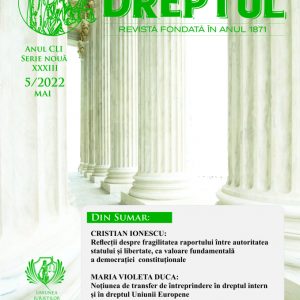 The premise of this study is that the current legislation uses two legal notions with relatively different names, that is the „legitimate interest” in the administrative contentious procedure, regulated by the Law No 554/2004, and the „interest to act”, used in the Civil Procedure Code, both representing conditions of admissibility of the judicial action (in administrative contentious and, respectively, civil action). The aim pursued by the author was to observe whether these legal notions are synonyms or they differ, in terms of their processual connotation, depending on the nature of the legal action promoted. In this regard, the author has compared the two legal notions, revealing the similarities and differences between them, and, at the end of the study, he has set out the theoretical and practical arguments for the purpose of recognizing their processual autonomy.
The premise of this study is that the current legislation uses two legal notions with relatively different names, that is the „legitimate interest” in the administrative contentious procedure, regulated by the Law No 554/2004, and the „interest to act”, used in the Civil Procedure Code, both representing conditions of admissibility of the judicial action (in administrative contentious and, respectively, civil action). The aim pursued by the author was to observe whether these legal notions are synonyms or they differ, in terms of their processual connotation, depending on the nature of the legal action promoted. In this regard, the author has compared the two legal notions, revealing the similarities and differences between them, and, at the end of the study, he has set out the theoretical and practical arguments for the purpose of recognizing their processual autonomy. -
 Recognition of the adherence of leniency to the legal phenomenon or its inclusion in the extrajuridical field is determined by the nature of philosophicalmaterialist or idealist conceptions. Amnesty and pardon are based on the socio-political grounds and have as foundation the feelings of gentleness, magnanimity, compassion. Justice is the ideal state of society, achievable by ensuring, for each separately and for everyone together, the enjoyment of legitimate rights and interests. The fundamental components or values of the notion of justice are: righteousness, social utility, legal certainty. The concept of leniency is related to all the three elements. By its very name, its functions and its purpose, the law must be based on the idea of righteousness. The essence of the idea of righteousness is to treat similar cases equally and different cases in distinct ways. The exercise of leniency is closely related to the principle of justice. Social utility means to organize a community to ensure the good of everyone and of each separately. The same social utility claiming punishment sometimes justifies the abandonment of punishment or forgiveness thereof. Legal security designates that state of safety of individuals and of society as conferred by the legal normativity by complying with its prescriptions. Although it is sometimes considered that leniency means bankruptcy in criminal justice, the legal certainty will never be affected if leniency acts are consistent with a rational legal conscience and does not harm the rights of the injured parties by committing the offence. Amnesty and pardon are not directed against legal certainty, but, on the contrary, they are put to the service of the common good, which is a proof of trust and a means of protecting the citizens. The three components of the idea of justice – righteousness, social utility and legal certainty – are in a tensed state. Amnesty and pardon are called to detension and harmonize these relations. Leniency is not in antithesis with the law, but it is inevitable for its completion.
Recognition of the adherence of leniency to the legal phenomenon or its inclusion in the extrajuridical field is determined by the nature of philosophicalmaterialist or idealist conceptions. Amnesty and pardon are based on the socio-political grounds and have as foundation the feelings of gentleness, magnanimity, compassion. Justice is the ideal state of society, achievable by ensuring, for each separately and for everyone together, the enjoyment of legitimate rights and interests. The fundamental components or values of the notion of justice are: righteousness, social utility, legal certainty. The concept of leniency is related to all the three elements. By its very name, its functions and its purpose, the law must be based on the idea of righteousness. The essence of the idea of righteousness is to treat similar cases equally and different cases in distinct ways. The exercise of leniency is closely related to the principle of justice. Social utility means to organize a community to ensure the good of everyone and of each separately. The same social utility claiming punishment sometimes justifies the abandonment of punishment or forgiveness thereof. Legal security designates that state of safety of individuals and of society as conferred by the legal normativity by complying with its prescriptions. Although it is sometimes considered that leniency means bankruptcy in criminal justice, the legal certainty will never be affected if leniency acts are consistent with a rational legal conscience and does not harm the rights of the injured parties by committing the offence. Amnesty and pardon are not directed against legal certainty, but, on the contrary, they are put to the service of the common good, which is a proof of trust and a means of protecting the citizens. The three components of the idea of justice – righteousness, social utility and legal certainty – are in a tensed state. Amnesty and pardon are called to detension and harmonize these relations. Leniency is not in antithesis with the law, but it is inevitable for its completion. -
 Given the absence of solutions expressly provided by law, national criminal courts now apply, with more courage and in the interest of justice, fundamental principles of criminal process as laid down by the Constitution, the Criminal Procedure Code and the practice of the European Court of Human Rights, which provides free access to justice, including judicial control on the acts of the prosecutor. In this context, the old adage „Justice is blind” may be replaced with a new concept, better suited to new national, European and international economic and social relations – „Justice is not always blind”.
Given the absence of solutions expressly provided by law, national criminal courts now apply, with more courage and in the interest of justice, fundamental principles of criminal process as laid down by the Constitution, the Criminal Procedure Code and the practice of the European Court of Human Rights, which provides free access to justice, including judicial control on the acts of the prosecutor. In this context, the old adage „Justice is blind” may be replaced with a new concept, better suited to new national, European and international economic and social relations – „Justice is not always blind”. -
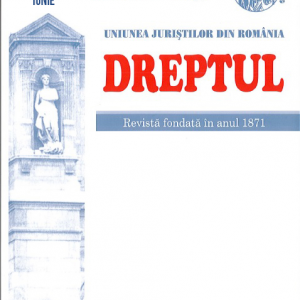 The offence committed during the fulfilment of the obligation loses its prohibitive character and thus re-enters the scope of licitness, becoming again compatible with the rule of law. This study examines thoroughly this notion not detailed in the new Criminal Code and intends to trace the outer limits to which this justificative cause is applicable, especially with reference to the categories exposed to such occupational hazards, such as the military, the police officers, the physicians and others.
The offence committed during the fulfilment of the obligation loses its prohibitive character and thus re-enters the scope of licitness, becoming again compatible with the rule of law. This study examines thoroughly this notion not detailed in the new Criminal Code and intends to trace the outer limits to which this justificative cause is applicable, especially with reference to the categories exposed to such occupational hazards, such as the military, the police officers, the physicians and others. -
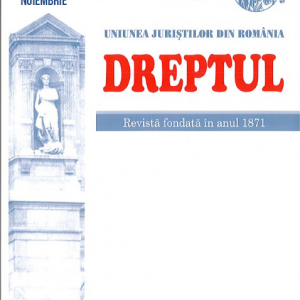 This article seeks to clarify whether the scope of the revision cases also includes the one based on a case dismissal solution given by the prosecutor and that was deemed by a part of the legal practice as documentary evidence for the purposes of Section 5 of the Art. 322 of the Code of Civil Procedure. The author shows that the analysis of the meaning of “documentary evidence” has determined that the prosecutor’s acts lack this character, as the case dismissal solution is not decisive for the fate of the trial and has no probative value in itself. Examination of these admissibility aspects, and exclusion of the prosecutor’s case dismissal resolution / ordinance from the documentary evidence category are reasons for supporting the conclusion that this solution adopted by the prosecutor shall not be imposed upon the civil court and can not substantiate a revision which is based on the provisions of Section 5 of the Article 322 of the Code of Civil Procedure.
This article seeks to clarify whether the scope of the revision cases also includes the one based on a case dismissal solution given by the prosecutor and that was deemed by a part of the legal practice as documentary evidence for the purposes of Section 5 of the Art. 322 of the Code of Civil Procedure. The author shows that the analysis of the meaning of “documentary evidence” has determined that the prosecutor’s acts lack this character, as the case dismissal solution is not decisive for the fate of the trial and has no probative value in itself. Examination of these admissibility aspects, and exclusion of the prosecutor’s case dismissal resolution / ordinance from the documentary evidence category are reasons for supporting the conclusion that this solution adopted by the prosecutor shall not be imposed upon the civil court and can not substantiate a revision which is based on the provisions of Section 5 of the Article 322 of the Code of Civil Procedure. -
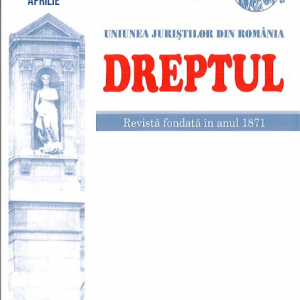 The author makes an analysis of the stages preliminary to judgment of the appeal ex novo in the view of the new Civil Procedure Code, of the legislation implementing this Code, as well as of the Internal Rules of the law courts, debates the issue of regularization of the application for appeal ex novo and the incidence in the appeal ex novo of the provisions of Article 200 of the Civil Procedure Code. At the same time it is subject to analysis the issue of the law applicable in matters of judicial stamp duty after the entry into force of the Government Emergency Ordinance No 80/2013, concerning the applications for appeal ex novo submitted after 29 June 2013 in trials initiated during the period when in the matter of the judicial stamp duty the Law No 146/1997 was in force.
The author makes an analysis of the stages preliminary to judgment of the appeal ex novo in the view of the new Civil Procedure Code, of the legislation implementing this Code, as well as of the Internal Rules of the law courts, debates the issue of regularization of the application for appeal ex novo and the incidence in the appeal ex novo of the provisions of Article 200 of the Civil Procedure Code. At the same time it is subject to analysis the issue of the law applicable in matters of judicial stamp duty after the entry into force of the Government Emergency Ordinance No 80/2013, concerning the applications for appeal ex novo submitted after 29 June 2013 in trials initiated during the period when in the matter of the judicial stamp duty the Law No 146/1997 was in force. -
 Încheierea definitivă pronunțată de către judecătorul de drepturi și libertăți de la Judecătoria Sighetu Marmației, în conformitate cu dispozițiile art. 4886 alin. (7) din C.pr.pen., ne oferă prilejul comentariului de față. În speță, la data de 22 ianuarie 2018, persoana vătămată (constituită parte civilă) P.J. a depus plângere prealabilă la Parchetul de pe lângă Judecătoria Sighetu Marmației, solicitând efectuarea de acte de urmărire penală față de făptuitorii B.I., B.M. și C.V. pentru săvârșirea infracțiunii de degradarea terenurilor agricole, prevăzută de art. 107 din Legea nr. 18/1991, Legea fondului funciar, actualizată, raportat la dispozițiile art. 253 alin. (1) din C.pen. În susținerea plângerii, a menționat că la data de 3 ianuarie 2018 făptuitorii au trecut de mai multe ori cu atelajele proprietate personală trase de câte 2 cai, încărcate peste capacitate, peste terenul de natură fâneață pe care îl deține, împrejurări în care, sub greutatea încărcăturii, copitele cailor de tracțiune și roțile atelajelor au creat urme adânci în solul puternic îmbibat de apele pluviale, terenul agricol fiind degradat pe o suprafață de 900 mp.
Încheierea definitivă pronunțată de către judecătorul de drepturi și libertăți de la Judecătoria Sighetu Marmației, în conformitate cu dispozițiile art. 4886 alin. (7) din C.pr.pen., ne oferă prilejul comentariului de față. În speță, la data de 22 ianuarie 2018, persoana vătămată (constituită parte civilă) P.J. a depus plângere prealabilă la Parchetul de pe lângă Judecătoria Sighetu Marmației, solicitând efectuarea de acte de urmărire penală față de făptuitorii B.I., B.M. și C.V. pentru săvârșirea infracțiunii de degradarea terenurilor agricole, prevăzută de art. 107 din Legea nr. 18/1991, Legea fondului funciar, actualizată, raportat la dispozițiile art. 253 alin. (1) din C.pen. În susținerea plângerii, a menționat că la data de 3 ianuarie 2018 făptuitorii au trecut de mai multe ori cu atelajele proprietate personală trase de câte 2 cai, încărcate peste capacitate, peste terenul de natură fâneață pe care îl deține, împrejurări în care, sub greutatea încărcăturii, copitele cailor de tracțiune și roțile atelajelor au creat urme adânci în solul puternic îmbibat de apele pluviale, terenul agricol fiind degradat pe o suprafață de 900 mp. -
 Commenting on a judgment pronounced by Craiova Court of Appeal, the author makes certain considerations related, on one hand, to the prosecutor’s right to declare the appeal regarding the civil side for lack of appeal of the civil party and, on the other hand, to the effects of the second appeal in the criminal proceedings.
Commenting on a judgment pronounced by Craiova Court of Appeal, the author makes certain considerations related, on one hand, to the prosecutor’s right to declare the appeal regarding the civil side for lack of appeal of the civil party and, on the other hand, to the effects of the second appeal in the criminal proceedings. -
 This study focuses on the analysis of a rule of incrimination included in Article 190 of the new Criminal Code of Romania and entitled „killing at the victim’s request”. Naturally, the monographic research of this rule is set within the broader framework of the phenomenon of euthanasia, a phenomenon often subject to heated controversies in the criminal legal doctrine and that receives differentiated approaches brought by the multidisciplinary perspective they generate.
This study focuses on the analysis of a rule of incrimination included in Article 190 of the new Criminal Code of Romania and entitled „killing at the victim’s request”. Naturally, the monographic research of this rule is set within the broader framework of the phenomenon of euthanasia, a phenomenon often subject to heated controversies in the criminal legal doctrine and that receives differentiated approaches brought by the multidisciplinary perspective they generate. -
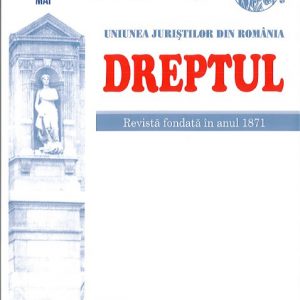 The purpose of this paper is to offer the reader a brief incursion in the procedure of expropriation for cause of public utility, necessary to achieve some objectives of national, county and local interest, as it is regulated by the Law No 255/2010, as amended and supplemented. In this regard, the paper contains references to the relevant national case law, but also to the Norms of application of the Law No 255/2010, as well as to the applicable civil processual provisions, where appropriate.
The purpose of this paper is to offer the reader a brief incursion in the procedure of expropriation for cause of public utility, necessary to achieve some objectives of national, county and local interest, as it is regulated by the Law No 255/2010, as amended and supplemented. In this regard, the paper contains references to the relevant national case law, but also to the Norms of application of the Law No 255/2010, as well as to the applicable civil processual provisions, where appropriate. -
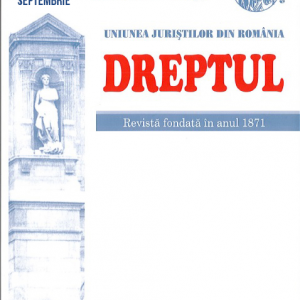 This article examines the legal protection of individuals from listening, disclosure or transmission of private conversations or confidential or personal audio-visual information, and comparatively analyzes regulations in matters of private life from different European criminal codes. Regulating the offense of private life violation was absolutely necessary, both to complete the criminal protection framework of the values guaranteed by Article 8 of the (European) Convention on Human Rights and Fundamental Freedoms, as the offense is not known in Romania, and to achieve interference between the concept of private life and personal privacy in the context of excessive public dissemination of private life.
This article examines the legal protection of individuals from listening, disclosure or transmission of private conversations or confidential or personal audio-visual information, and comparatively analyzes regulations in matters of private life from different European criminal codes. Regulating the offense of private life violation was absolutely necessary, both to complete the criminal protection framework of the values guaranteed by Article 8 of the (European) Convention on Human Rights and Fundamental Freedoms, as the offense is not known in Romania, and to achieve interference between the concept of private life and personal privacy in the context of excessive public dissemination of private life. -
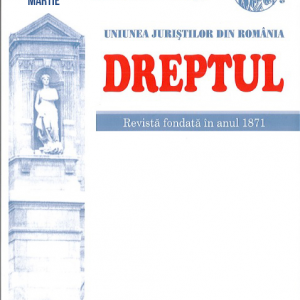 At first sight, guilt appears as being one of the necessary conditions for engaging liability, which is quite easy to determine. In fact, in order to make such a statement it must be considered the structure of guilt, formed not only of the intellective and volitive factors that make up the complex psychological process which stands at the origin of the illicit activity, but also the imputation which can be brought to the agent for a conduct inconsistent with the rigours imposed by the legal order. By the analysis made, the author of this study has emphasized both the strengths, and the disadvantages of the criteria subjectively, objectively and even intermediately used for determining the civil guilt in concrete situations. Likewise, he has also dealt with the possibility of determining the criminal guilt in the light of the psychological and normative conceptions. At the same time, by expressing his options for some of these, the author has proposed some nuancings in order to obtain some results as precise as possible and, at the same time, fair for all parties involved.
At first sight, guilt appears as being one of the necessary conditions for engaging liability, which is quite easy to determine. In fact, in order to make such a statement it must be considered the structure of guilt, formed not only of the intellective and volitive factors that make up the complex psychological process which stands at the origin of the illicit activity, but also the imputation which can be brought to the agent for a conduct inconsistent with the rigours imposed by the legal order. By the analysis made, the author of this study has emphasized both the strengths, and the disadvantages of the criteria subjectively, objectively and even intermediately used for determining the civil guilt in concrete situations. Likewise, he has also dealt with the possibility of determining the criminal guilt in the light of the psychological and normative conceptions. At the same time, by expressing his options for some of these, the author has proposed some nuancings in order to obtain some results as precise as possible and, at the same time, fair for all parties involved. -
 In this study, the author carries out a detailed analysis of the content of the offence regulated by art. 2803 of Law no. 31/1990 on companies, as republished, subsequently amended and supplemented, criticizing a series of opinions expressed in the specialty literature regarding the constituent elements of this offence. In the last part of the publication, the author raises the question of autonomy of the examined offence as compared to the offence regulated under art. 291 of the Criminal Code (art. 323 of the new Criminal Code), proposing certain criteria for the classification of these two offences.
In this study, the author carries out a detailed analysis of the content of the offence regulated by art. 2803 of Law no. 31/1990 on companies, as republished, subsequently amended and supplemented, criticizing a series of opinions expressed in the specialty literature regarding the constituent elements of this offence. In the last part of the publication, the author raises the question of autonomy of the examined offence as compared to the offence regulated under art. 291 of the Criminal Code (art. 323 of the new Criminal Code), proposing certain criteria for the classification of these two offences. -
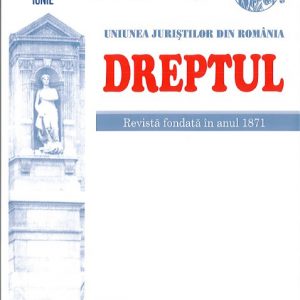 The study intends to provide an overview of a recently established public institution, namely the National Agency for the Administration of Seized Assets. Its establishment was an objective included in the National Anti-corruption Strategy for 2012–2015, approved by the Government Decision No 215/2012. The analysis will focus on aspects concerning its general status, structure, personnel and it will be made from a critical perspective on some legal provisions inclusively. In this way, we will try to draw attention to some deficiencies of the regulation, by proposing solutions which hopefully will be considered in the future.
The study intends to provide an overview of a recently established public institution, namely the National Agency for the Administration of Seized Assets. Its establishment was an objective included in the National Anti-corruption Strategy for 2012–2015, approved by the Government Decision No 215/2012. The analysis will focus on aspects concerning its general status, structure, personnel and it will be made from a critical perspective on some legal provisions inclusively. In this way, we will try to draw attention to some deficiencies of the regulation, by proposing solutions which hopefully will be considered in the future. -
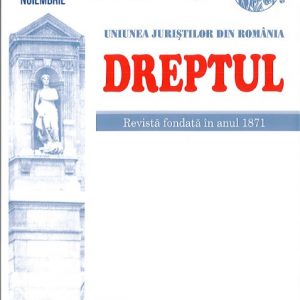 Within this paper, the author makes a thorough analysis of the offence regulated by Article 277 of the Criminal Code, starting with the reason of incrimination and presenting in detail the constitutive elements of this new offence. To this end the author often makes reference to the provisions of the Statement of reasons of the Law No 286/2009. At the same time, the author confers a particular importance to establishing the existing relations between the offence provided by Article 277 of the Criminal Code and those regulated by Article 12 point 2 of the Law No 78/2000, by Article 269 of the Criminal Code, respectively.
Within this paper, the author makes a thorough analysis of the offence regulated by Article 277 of the Criminal Code, starting with the reason of incrimination and presenting in detail the constitutive elements of this new offence. To this end the author often makes reference to the provisions of the Statement of reasons of the Law No 286/2009. At the same time, the author confers a particular importance to establishing the existing relations between the offence provided by Article 277 of the Criminal Code and those regulated by Article 12 point 2 of the Law No 78/2000, by Article 269 of the Criminal Code, respectively. -
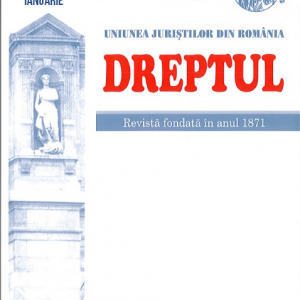 In this article the author raises for discussion some theoretical and practical issues referring to the judicial control and to the judicial control on bail, preventive measures which have been regulated in this form in the new Criminal Procedure Code, focusing on how they are implemented, in order to avoid some errors or confusions related to their interpretation and application.
In this article the author raises for discussion some theoretical and practical issues referring to the judicial control and to the judicial control on bail, preventive measures which have been regulated in this form in the new Criminal Procedure Code, focusing on how they are implemented, in order to avoid some errors or confusions related to their interpretation and application. -
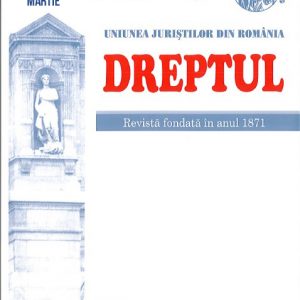 Among the measures initiated by the European bodies and subsequently taken over and adopted by the judicial authorities of the Member States to combat cross-border crime are those regarding the judicial cooperation in criminal matters referring to the tracing, identification, freezing and confiscation of proceeds, instruments and assets related to the offences committed by this kind of criminality. In this regard, the Report of the Commission to the European Parliament and to the Council on the progress made by Romania under the cooperation and verification mechanism, issued on 13 November 2018 in Strasbourg, through the Recommendation No 12, was sending to the Romanian authorities „the assurance that the National Agency for Management of Seized Assets is fully and effectively operational, so as to be able to publish the first annual report with reliable statistical information on the confiscation of assets coming from committing offences. The Agency should establish a system of regular reporting on the development of its administrative capacity, on the results obtained in the confiscation and management of proceeds resulted from committing offences”. The Romanian legislative authorities have indeed adopted the Law No 318/2015 for the establishment, organization and functioning of the National Agency for Management of Seized Assets and for the amendment and supplementation of some normative acts, law published in the Official Gazette of Romania, Part I, No 961 of 24 December 2015. This first legislative approach, however, had to be supported also by other administrative and executive formalities which involved the effective establishment, organization, functioning and operationalization of this Agency, a fact ongoing even at the date thereof. It is also noted, at the time of writing this study, that this Agency is not operational and that there are ongoing, although with big delay, some procedures for organising contests and for filling several offices therein in order to become functional. Starting from these coordinates, the article contains a brief analysis of the stage in which the Romanian authorities have complied with this recommendation, together with the relevant Romanian case law, with some of the Community norms and with the model of other European states in this matter, as well as its own conclusions necessary for an as good as possible implementation of this recommendation in the Romanian judiciary system.
Among the measures initiated by the European bodies and subsequently taken over and adopted by the judicial authorities of the Member States to combat cross-border crime are those regarding the judicial cooperation in criminal matters referring to the tracing, identification, freezing and confiscation of proceeds, instruments and assets related to the offences committed by this kind of criminality. In this regard, the Report of the Commission to the European Parliament and to the Council on the progress made by Romania under the cooperation and verification mechanism, issued on 13 November 2018 in Strasbourg, through the Recommendation No 12, was sending to the Romanian authorities „the assurance that the National Agency for Management of Seized Assets is fully and effectively operational, so as to be able to publish the first annual report with reliable statistical information on the confiscation of assets coming from committing offences. The Agency should establish a system of regular reporting on the development of its administrative capacity, on the results obtained in the confiscation and management of proceeds resulted from committing offences”. The Romanian legislative authorities have indeed adopted the Law No 318/2015 for the establishment, organization and functioning of the National Agency for Management of Seized Assets and for the amendment and supplementation of some normative acts, law published in the Official Gazette of Romania, Part I, No 961 of 24 December 2015. This first legislative approach, however, had to be supported also by other administrative and executive formalities which involved the effective establishment, organization, functioning and operationalization of this Agency, a fact ongoing even at the date thereof. It is also noted, at the time of writing this study, that this Agency is not operational and that there are ongoing, although with big delay, some procedures for organising contests and for filling several offices therein in order to become functional. Starting from these coordinates, the article contains a brief analysis of the stage in which the Romanian authorities have complied with this recommendation, together with the relevant Romanian case law, with some of the Community norms and with the model of other European states in this matter, as well as its own conclusions necessary for an as good as possible implementation of this recommendation in the Romanian judiciary system. -
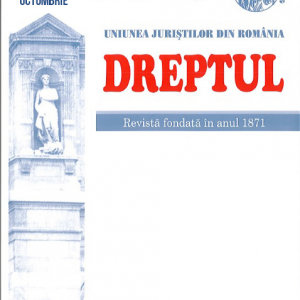 This study proposes a broader specialists’ examination of the scientific work represented by the computer program, and particularly of its usage agreement. Law no. 8/1996 regulations on copyright and related rights concerning the computer program usage agreement were investigated in relation to the rules provided for in same law and established for the patrimonial copyrights capitalization agreements and to the provisions of the Civil Code (Law no. 287/ 2009) and of the new the Civil Procedure Code (Law no. 134/2010). The paper contains the legal literature prevalent views on the computer programs usage agreement and the author’s views about some aspects of the analyzed agreement, leaving open path for research, from various perspectives, of particularly complex and evolving legal issues in the matter.
This study proposes a broader specialists’ examination of the scientific work represented by the computer program, and particularly of its usage agreement. Law no. 8/1996 regulations on copyright and related rights concerning the computer program usage agreement were investigated in relation to the rules provided for in same law and established for the patrimonial copyrights capitalization agreements and to the provisions of the Civil Code (Law no. 287/ 2009) and of the new the Civil Procedure Code (Law no. 134/2010). The paper contains the legal literature prevalent views on the computer programs usage agreement and the author’s views about some aspects of the analyzed agreement, leaving open path for research, from various perspectives, of particularly complex and evolving legal issues in the matter. -
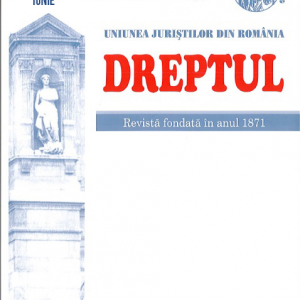 This paper deals with contesting protective measures taken during criminal proceedings at the request of the civil party. Authors consider that it is the right of the civil party to request for such measures to be taken with regard to the assets of the defendant and to those belonging to the party liable under the civil law. Moreover, the civil party can contest the manner in which the court applies this request.
This paper deals with contesting protective measures taken during criminal proceedings at the request of the civil party. Authors consider that it is the right of the civil party to request for such measures to be taken with regard to the assets of the defendant and to those belonging to the party liable under the civil law. Moreover, the civil party can contest the manner in which the court applies this request. -
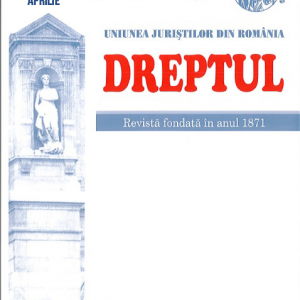 This paper is a review of the provisions set forth in Art. 216 of the Criminal Code, which focuses on questionable theoretical and practical aspects, especially on the question of criteria for distinguishing between the offences of found property appropriation and theft offences. Likewise, the author makes a comparative analysis of the provisions of Art. 216 of the Criminal Code, reported to Art. 243 of the new Criminal Code.
This paper is a review of the provisions set forth in Art. 216 of the Criminal Code, which focuses on questionable theoretical and practical aspects, especially on the question of criteria for distinguishing between the offences of found property appropriation and theft offences. Likewise, the author makes a comparative analysis of the provisions of Art. 216 of the Criminal Code, reported to Art. 243 of the new Criminal Code. -
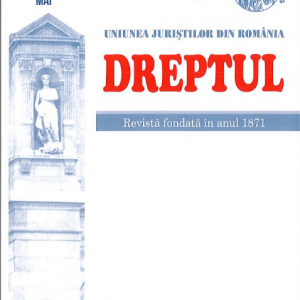 In Romania, the Civil Procedure Code in force shall be repealed and replaced by the new Civil Procedure Code, which was published on July 15, 2010, but has not come into force yet (the time when it comes into force has not been legally established yet). Until such time, Law No. 202/2010 regarding certain measures to accelerate disputes resolution (The “Small Reform” Law) was enacted and came into force in October 2010. In this study, the author makes a comparative examination of the following issues: the exception of the lack of competence, competence conflicts and the transposition to the current Civil Procedure Code, by taking into consideration Law No. 202/2010 and, respectively, the new Civil Procedure Code. The author reaches the conclusion that, sometimes, in law, the regulations of the current Code are better than the regulations of Law No. 202/2010 or of the new Civil Procedure Code; also, there are contradictions between the new laws (Law No. 202/2010 and the new Civil Procedure Code). Given these facts, certain de lege ferenda proposals are laid down.
In Romania, the Civil Procedure Code in force shall be repealed and replaced by the new Civil Procedure Code, which was published on July 15, 2010, but has not come into force yet (the time when it comes into force has not been legally established yet). Until such time, Law No. 202/2010 regarding certain measures to accelerate disputes resolution (The “Small Reform” Law) was enacted and came into force in October 2010. In this study, the author makes a comparative examination of the following issues: the exception of the lack of competence, competence conflicts and the transposition to the current Civil Procedure Code, by taking into consideration Law No. 202/2010 and, respectively, the new Civil Procedure Code. The author reaches the conclusion that, sometimes, in law, the regulations of the current Code are better than the regulations of Law No. 202/2010 or of the new Civil Procedure Code; also, there are contradictions between the new laws (Law No. 202/2010 and the new Civil Procedure Code). Given these facts, certain de lege ferenda proposals are laid down.
